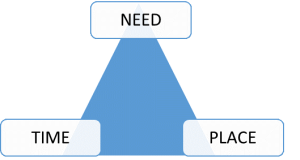I run into several articles about mobile marketing and mobile apps that showed me how powerful the mobile devices’ world is. I have to admit I have no clue how adroit app developers can be. Did you know that Johnson & Johnson developed an app that guides parents through bath-and-bed time proces, provides them with useful advices and even helps their baby to fall asleep by playing lullabies? Another example – would you ever associate the insurance industry with meditation? I would not. But the meditation app provided by US insurance company Cigna found a lot of fans.
There is one thing that guarantees a success. Good and useful mobile application must be available for a user when he NEEDS it + exactly in the TIME and in the PLACE in which he needs it.
When I went through all that examples of “useful” apps I started to be little bit worried about the humankind future. Our mobile devices give us such a basic information on a daily basis that we are losing our common sense and natural thinking about problems. It is the same like the internet. Almost no one can imagine doing homework/research/project without using internet nowadays. I somehow feel that such an easy way of living only dulls the society and makes human kind more vulnerable when anything un-expectable happens. Just imagine worldwide disaster during which the internet would not work and all devices would be disconnected. We would not know what to do or where to go to save our lives just because we would not be able to read it on our mobile dashboard.


